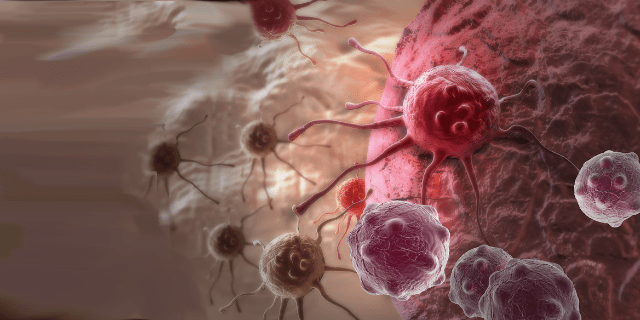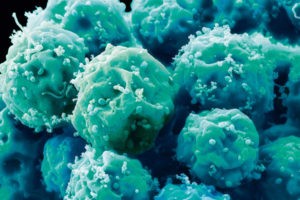
Recently Diagnosed or Relapsed? Stop Looking For a Miracle Cure, and Use Evidence-Based Therapies To Enhance Your Treatment and Prolong Your Remission
Multiple Myeloma an incurable disease, but I have spent the last 25 years in remission using a blend of conventional oncology and evidence-based nutrition, supplementation, and lifestyle therapies from peer-reviewed studies that your oncologist probably hasn't told you about.
Click the orange button to the right to learn more about what you can start doing today.
- You are here:
- Home »
- Blog »
- Multiple Myeloma »
- Myeloma Stem Cell Transplant- Maximize Stem Cell Harvest-
Myeloma Stem Cell Transplant- Maximize Stem Cell Harvest-

“The yield was better with chemotherapy, but 4 million stem cells per kg is sufficient for two transplants, so the higher yield may not be clinically meaningful.”
It is called a “myeloma stem cell transplant” but we rarely talk about the stem cells (SCs). Much less how important it is to harvest them. I mean, we talk about when, or if an ASCT is right for the patient. We talk about possible short, long-term and late stage side effects from an ASCT. As an MM surivor and MM cancer coach, I try to research and write about every single aspect of ASCT that newly diagnosed MMer may want to know about. And some aspects that they might NOT want to know about.
The three articles linked and excerpted below provide a spectrum of information about stem cell collection for myeloma patients preparing for an autologous stem cell transplant
The main take-away below, in my opinion anyway, is that chemotherapy used to enhance stem cell collection may lead to adverse events aka side effects. I underwent two courses of high-dose cytoxan in order to stimulate my bodies stem cell production.
I live with haemorrhagic cystitis as a result.
You may want to discuss possible adverse events with your oncologist before you undergo SC harvesting. And while you at it, be sure to collect enough SCs for two different ASCT. Just in case…
To Learn More about ASCT and Harvesting Stem Cells- click now
To learn more about managing your multiple myeloma, scroll down the page, post a question or comment and I will reply to you ASAP.
Thank you,
David Emerson
- MM Survivor
- MM Cancer Coach
- Director PeopleBeatingCancer
Recommended Reading:
- Multiple Myeloma-Adverse Events Since 1994-My Cancer Story
- Multiple Myeloma, Financial Toxicity, Work Arounds!
- Stem Cell Transplants Increase Risk of Skin Cancers
How Bone Marrow and Stem Cells are Collected
“The largest concentration of blood SCs is in your bone marrow. However, the blood stem cells can be moved or “mobilized” out of the bone marrow into the bloodstream (peripheral blood) where they can be easily collected. Most transplants these days use stem cells collected from the bloodstream…
Most people tolerate these drugs well, although mild, flu-like symptoms are common. The symptoms end a few days after the injections stop.
If you are collecting SCs for your own transplant, chemotherapy drugs may be used to help move the SCs out of your bone marrow into the bloodstream…”
Stem cell mobilization by hyperbaric oxygen.
” We conclude that HBO(2) mobilizes stem/progenitor cells by stimulating *Nitric Oxide synthesis.”
Combination Therapy Enhances Stem Cell Mobilization in Patients With Multiple Myeloma
“Intermediate-dose cytarabine (ID-AraC) in combination with granulocyte-colony stimulating factor (G-CSF) improved SC mobilization in patients with multiple myeloma compared with those who received G-CSF alone prior to tandem autologous stem cell transplantation (autoSCT), according to a recent phase III trial published in Biology of Blood and Marrow Transplantation…
For the primary endpoint, 98% and 70% of patients in the ID-AraC arm (43/46) and in the G-CSF arm (32/44), respectively, reached the SC yield minimum (P = .0003). The median number of CD34+ cells was 3.4 times higher in the ID-AraC group (20.2 × 106 CD34+ cells/kg than in the G-CSF group (5.9 × 106 CD34+ cells/kg; P < .000001). For 86% of the patients in the ID-AraC arm (37/46) and 41% of those in the G-CSF arm (13/44), a single apheresis sufficed to collect at least 5 × 106 CD34+ cells/kg (P = .00008)…
All patients in both groups completed the mobilization stage; however, hospitalization time was shorter in the G-CSF group (9 days; range, 5–15 days) compared with the ID-AraC group (16 days; range, 14–21 days; P = .000001). Patients in the ID-AraC group experienced grade 3 (9%) and 4 (25%) neutropenia and grade 3 (27%) and 4 (48%) thrombocytopenia, whereas those in the G-CSF group did not. While no bleeding episodes occurred, 34% of patients in the ID-AraC group required platelet transfusion compared with only 2% of patients in the G-CSF group…
“The yield was better with chemotherapy, but 4 million cells per kg is sufficient for two transplants, so the higher yield may not be clinically meaningful.”


